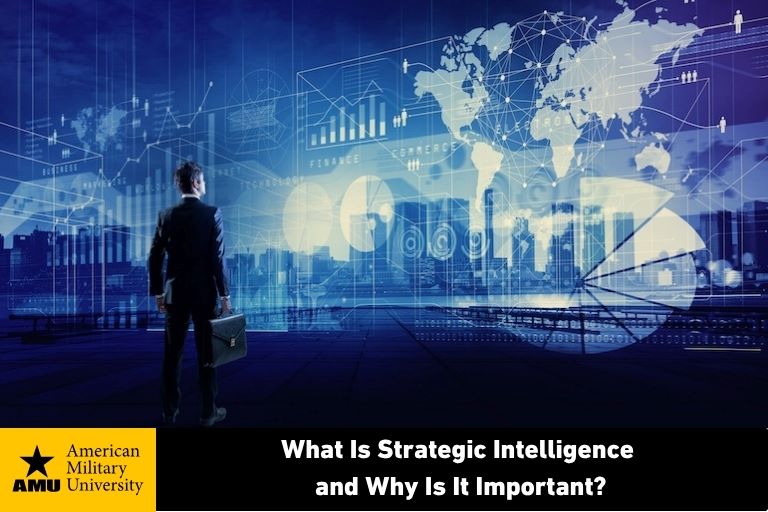By Dr. David James Kritz | 06/26/2025

What is strategic intelligence? At its core, it’s the ability to anticipate, assess, and respond to complex global threats and improve business performance through informed planning and deliberate action.
In the world of intelligence that revolves around probabilities and uncertainties, strategic intelligence helps to keep nations safe. It informs decision-makers about policies and military plans so that they can mitigate risks, make strategic decisions, and address new trends before they turn into full-scale threats.
For example, the Cold War between the United States and the Soviet Union is a historical case study of strategic intelligence. In this conflict, strategic intelligence shaped how the U.S. responded to Soviet activities, including deceptive operations.
One example is Operation ANADYR; the Soviets conducted a masterclass in deception by attempting to clandestinely transport missiles to Cuba in 1962. Through strategic intelligence and effective leadership, there was sufficient understanding of the intentions on both sides to maintain a fragile peace while still preparing to conduct combat operations if necessary – leading to a cold war that never turned hot, thankfully.
This example underscores how strategic intelligence aids senior decision makers in assessing potential risks, navigating the threat landscape, and making strategic choices that preserve peace and national security.
Strategic intelligence can be broken down into three areas: knowledge, organizations, and activities.
Strategic Intelligence and Knowledge
Modern life is dominated by data, misinformation, and propaganda. Consequently, it’s critical to distinguish between valid information and subjective interpretations.
The tiers of the data, information, knowledge, and wisdom (DIKW) pyramid shows how information progresses from raw data to bona fide intelligence. Within this model, intelligence belongs in the “knowledge” tier of the pyramid, offering context and understanding beyond the raw facts.
Today, we encounter various types of intelligence, including:
- Competitive intelligence
- Military intelligence
- Tactical intelligence
- National intelligence
- Business intelligence
- Financial intelligence
We’re also encountering new technologies, such as the integration of artificial intelligence (AI) and machine learning.
Sherman Kent, a former Yale historian who later joined the Central Intelligence Agency (CIA), is largely considered the father of intelligence analysis. He wrote multiple works regarding his thoughts on strategic intelligence.
In 1949, Kent argued that strategic intelligence forms the foundations of a nation’s knowledge or awareness in both war and peace. His ideas remain deeply relevant as technological advancements reshape how intelligence is collected and applied to enable leaders to make informed decisions and gain a competitive advantage against adversaries.
Intelligence Organizations
Strategic thinking is a skill set that is honed over time through intentional practice and analytical craft. In the late 1940s, Kent made a strong argument that intelligence practitioners need to possess the qualities, discipline, and training of a researcher, including the skills to be both objective and impartial in testing hypotheses.
There are 18 agencies and organizations that make up the U.S. Intelligence Community (IC). These agencies work both independently and collaboratively to assess national and global challenges and inform decision makers of threats and opportunities.
This network of strategic intelligence functions as a systems thinking approach. Although, these organizations have separate missions, they collaborate with one another at times to achieve a common goal.
To enable effective decision-making, a strategic planning process – also known as the intelligence cycle – typically occurs. The intelligence cycle involves:
- Planning and direction
- Collection
- Processing
- Analysis
- Production
- Dissemination
The intelligence cycle is concerned with efficiently allocating resources and delivering actionable insights to intelligence customers. Those customers range from military field commanders to policymakers, corporate leaders, and other stakeholders, who need information to create goals regarding tactical intelligence, risk management, and market trends.
Similar to conducting scientific research to test hypotheses or gain insights, the Intelligence Community focuses on answering hypothetical questions that are categorized as high-priority intelligence requirements.
Strategic intelligence teams use tools to identify opportunities, anticipate market shifts, and provide guidance on allocating resources effectively – whether in business operations, the military, or national policy levels. This same framework can also support organizations in aligning intelligence outcomes with their corporate objectives and risk management, helping them stay agile in a competitive, technology-driven landscape.
Intelligence Activities
To generate insights, collect information, and develop strategic decisions, the U.S. Intelligence Community uses five primary disciplines:
- Open-source intelligence (OSINT)
- Geospatial intelligence (GEOINT)
- Human intelligence (HUMINT)
- Measurement and signature intelligence (MASINT)
- Signals intelligence (SIGINT)
These intelligence disciplines enable intelligence analysts to draw inferences from various types of information. Through the use of analytic tradecraft, analysts can make assessments and develop insights for intelligence customers. Most importantly, an analysis can lead to determining another country’s strategic intent toward the U.S.
One way intelligence activities can be conducted is through scenario planning. This activity allows for challenging assumptions and testing strategic options among the multiple courses of action available. Multinational enemies, friendly nations, and coalition partners may plan scenarios to refine their strategic decisions, combat operations, or strengthen their competitive edge.
The capabilities of intelligence, surveillance, and reconnaissance all play a part in risk management, including identifying and monitoring emerging trends and global hotspots. Through a dynamic approach of analyzing information and disseminating intelligence, national leaders can make more informed decisions, develop effective policies, and achieve strategic objectives.
The Doctor of Strategic Intelligence Degree at AMU
For adult learners interested in strategic intelligence and developing useful skills that could be used to seek positions in the Intelligence Community, American Military University (AMU) offers an online Doctor of Strategic Intelligence. For this degree program, students traditionally take courses in topics such as nationalism and identity, qualitative methods, and comparative intelligence institutions. Other courses include quantitative methods, strategic leadership, and national security decision making.
This doctoral degree has several requirements, including professional practice, a dissertation, a residency, and a practicum. For more information on this degree offering, visit our intelligence degrees program page.

